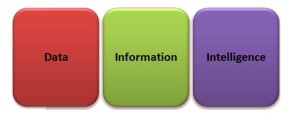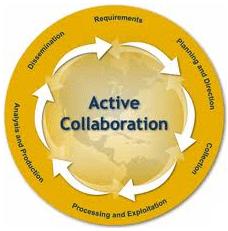A Brief Overview of Strategic Intelligence

We live in a world driven by hyper-competition where the supply of businesses exceeds the demand. In order for an organisation to survive in such an aggressively competitive environment, a better understanding of its competition and competitive forces that affect its success is required. Companies should know how to remain competitive and how to anticipate and react to changes inside and outside of their industries. In order to manage such an achievement firms should have a process in place for turning data into actionable intelligence, from which strategic and tactical decisions can derive.
Introduction
Competitive Intelligence (CI) is often defined as knowledge and foreknowledge about the external operating environment of the organization. The purpose of CI is to facilitate proactive decision-making by producing the needed business information into actionable form and making it available at the right time. The orientation and utilization of CI is tactical and to some extent strategic.
Strategic Intelligence is a type of Competitive Intelligence produced for strategic purposes. Customers of SI include individuals involved in strategic decision-making. From the process perspective, Strategic Intelligence can be seen as a part of Competitive Intelligence as it is also a systematic and continuous process with a purpose to facilitate decision-making with needed and timely intelligence input delivered in actionable form.
Figure 1. The process of intelligence
The major difference between SI and CI is that SI actions focus strictly on supporting strategic decision-making by monitoring aspects with strategic significance.
Users of SI are primarily individuals involved in strategy development. Additionally, a SI time horizon is broad and the focus is on all significant events: past, present and future events. In short, Strategic Intelligence can be defined as:
“A systematic and continuous process of producing needed intelligence of strategic value in an actionable form to facilitate long-term decision-making”.
The terms “intelligence” and “information”
People often get confused with the term “intelligence” in the context of CI, due to the existence of related fields, i.e. business intelligence (BI), market intelligence (MI), knowledge management (KM) and environmental scanning (ES).
BI is not the same as CI. When talking about BI, people refer primarily to data mining, a process that is highly driven by information technology to gather sale statistics, customer satisfaction, and historical/current views of business operation.
MI is referred as the information relevant to a company’s market which is generated to make accurate decision making in determining market opportunity and market penetration strategy, rather than in any other business aspect.
Furthermore, ES refers to the internal and external information that is required to keep a firm aware of opportunities and threats.
There is a strong association between CI and Knowledge Management (KM) since both fields rely on information. However, KM focuses more on the information that exists within an organisation while CI obtains information from both the internal and external environment of a firm.
In general, intelligence can be defined as:
“Intelligence measures a person’s ability to achieve goals in a wide range of environments.”
The Intelligence Cycle
The intelligence cycle is the process of developing unrefined data into polished intelligence for the use of policymakers. The intelligence cycle consists of six steps, described below. The graphic below shows the circular nature of this process.
Figure 2. Active Collaboration (image credit)
Requirements: They are identified information needs—what we must know to safeguard the nation. Requirements are developed based on critical information.
Planning & direction: This is the second stage of the intelligence cycle, which requires the identification of the key intelligence topics and the determination of the course. The planning & direction step can also be thought as the other end of the intelligence cycle, since once the desired intelligence is delivered to the decision makers.
Collection: The collection phase involves the gathering of raw information from which the required intelligence should be generated. A large amount of the collected information comes from publicly available materials. This phase also includes the processing of information so that it can be easily transmitted and electronically stored. Once the data is in electronic form, it can be manipulated into a form that allows for it to be analysed.
Processing and Exploitation: This involves converting the vast amount of information collected into a form usable by analysts. This is done through a variety of methods including decryption, language translations, and data reduction. Processing includes the entering of raw data into databases where it can be exploited for use in the analysis process.
Analysis and Production: The analysis phase is known to be the most challenging part of the intelligence cycle, since it requires high skilled practitioners. More specifically, the person performing such an analysis needs to weight information, look for patterns and come up with different scenarios based on what the analyst has discovered.
Dissemination: This is the last stage of the intelligence cycle. It is the step where the practitioner communicates the results of the analysis to the decision makers. The analyst must be able to suggest possible courses of action based on the work analysis and provide useful recommendations which must be supported by logical arguments, if requested.
Conclusion
In the future, building SI capability together with effective scenario planning will become more and more important especially when restructuring the traditional strategy processes to meet the needs of constantly changing business environments. When discussing the roles of SI in strategy development and the relationship between SI activities and the organisation’s strategy, SI could be described as a sonar, searching for underlying opportunities and threats that cannot easily be observed and a radar helping the company on its road to the future, supplying intelligence about turning points for the enterprise.
References:
[1] The Global Intelligence Alliance (GIA), Introduction to Strategic Intelligence, White paper, 2004
[2] Tsokanas Nikolaos, Fragouli Evangelia, Competitive Intelligence: concept, context and a case of its application, Science Journal of Business Management, 2012
Djekic M (2014-06-27 00:15:42). A Brief Overview of Strategic Intelligence. Australian Science. Retrieved: Dec 17, 2025, from https://ozscience.com/research-2/brief-overview-strategic-intelligence/
 Follow
Follow
